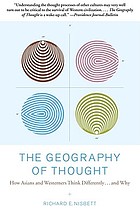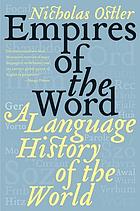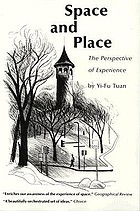Readings
We will have readings to do prior to each class.
The readings were selected to provide you a background to the topic to be discussed in each class.
They are not a collection of facts to be memorized.
Read them and reflect on them, but don't regard them as something you might have to repeat in an examination of some kind.
Be aware that the actual course of the class session may well deviate from the published schedule,
and we may not spend a lot of time on the content of the assigned readings.
However, the readings will still do you all good and should be done.
We will have three required texts for INLS758.

Nisbett, R. E. (2004). The geography of thought: How Asians and Westerners think differently – and why. New York: Free Press.
From the catalog description:
When psychologist Richard E. Nisbett showed an animated underwater scene to his American students, they zeroed in on a big fish swimming among smaller fish. Japanese observers instead commented on the background environment -- and the different "seeings" are a clue to profound cognitive differences between Westerners and East Asians. As Nisbett shows in The Geography of Thought, people think about -- and even see -- the world differently because of differing ecologies, social structures, philosophies, and educational systems that date back to ancient Greece and China. The Geography of Thought documents Professor Nisbett's groundbreaking research in cultural psychology, addressing questions such as:Why did the ancient Chinese excel at algebra and arithmetic, but not geometry, the brilliant achievement of such Greeks as Euclid? Why do East Asians find it so difficult to disentangle an object from its surroundings? Why do Western infants learn nouns more rapidly than verbs, when it is the other way around in East Asia? At a moment in history when the need for cross-cultural understanding and collaboration have never been more important, The Geography of Thought offers both a map to that gulf and a blueprint for a bridge that might be able to span it.
Content provided by Syndetic Solutions, Inc.

Ostler, N. (2006). Empires of the word: A language history of the world. New York: Harper Perennial.
From the catalog description:
Head of the Foundation for Endangered Languages, Ostler draws on his extensive study and research, mostly into now dead languages, to trace the history of the world's major languages. Language is always linked to a particular time and place, he says, but at the same time it is a unbroken link to all people in all times, and has played a larger role in history than any prince or economy. First he considers early languages that became dominant in certain areas or by migration, then more recent ones that have spread throughout the world by colonialism.
Annotation ©2004 Book News, Inc., Portland, OR (booknews.com)

Tuan, Y. (1977). Space and place: The perspective of experience. Minneapolis: University of Minnesota Press.
From the catalog description:
In this book, geographer Yi-Fu Tuan considers the ways in which people feel and think about space and place. Place is security, he suggests, and space is freedom: we are attached to the one and long for the other.
Content provided by Syndetic Solutions, Inc.
There will be other readings as well, but all will be either electronically accessible or will be provided to you.
There will be no books placed on reserve, but there is a link to an ever-expanding resource list on each page of the class website. If you are interested, you can find a copy via the links.

